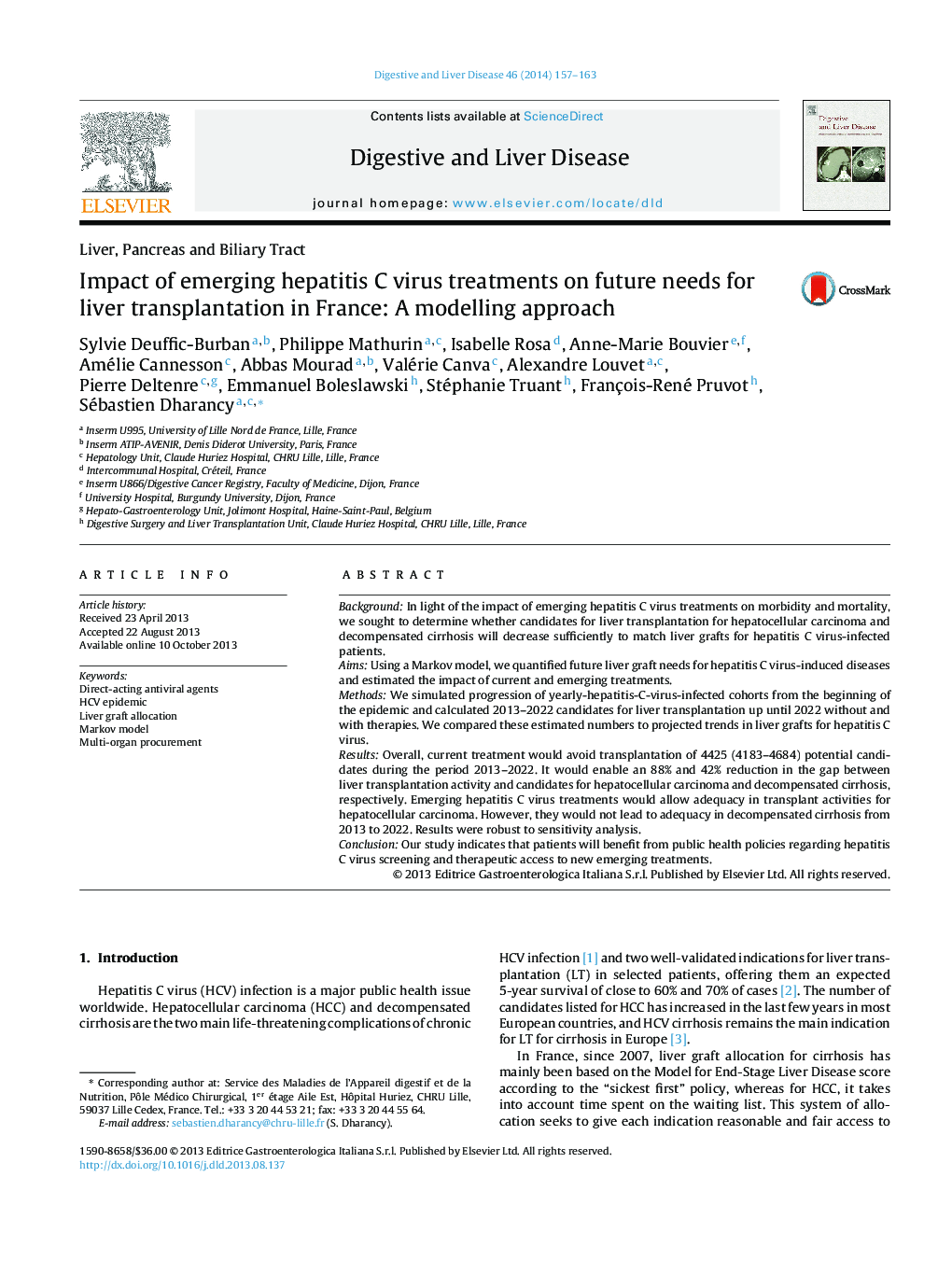| Article ID | Journal | Published Year | Pages | File Type |
|---|---|---|---|---|
| 6088799 | Digestive and Liver Disease | 2014 | 7 Pages |
BackgroundIn light of the impact of emerging hepatitis C virus treatments on morbidity and mortality, we sought to determine whether candidates for liver transplantation for hepatocellular carcinoma and decompensated cirrhosis will decrease sufficiently to match liver grafts for hepatitis C virus-infected patients.AimsUsing a Markov model, we quantified future liver graft needs for hepatitis C virus-induced diseases and estimated the impact of current and emerging treatments.MethodsWe simulated progression of yearly-hepatitis-C-virus-infected cohorts from the beginning of the epidemic and calculated 2013-2022 candidates for liver transplantation up until 2022 without and with therapies. We compared these estimated numbers to projected trends in liver grafts for hepatitis C virus.ResultsOverall, current treatment would avoid transplantation of 4425 (4183-4684) potential candidates during the period 2013-2022. It would enable an 88% and 42% reduction in the gap between liver transplantation activity and candidates for hepatocellular carcinoma and decompensated cirrhosis, respectively. Emerging hepatitis C virus treatments would allow adequacy in transplant activities for hepatocellular carcinoma. However, they would not lead to adequacy in decompensated cirrhosis from 2013 to 2022. Results were robust to sensitivity analysis.ConclusionOur study indicates that patients will benefit from public health policies regarding hepatitis C virus screening and therapeutic access to new emerging treatments.
